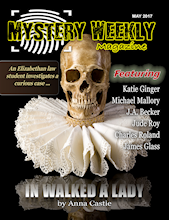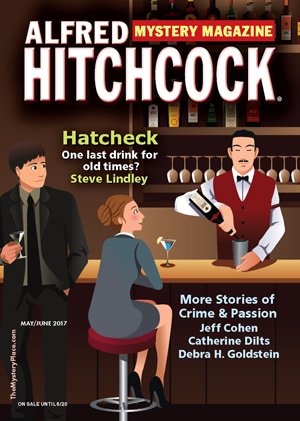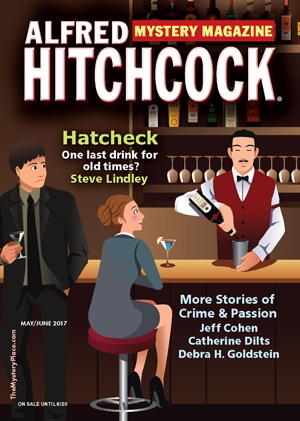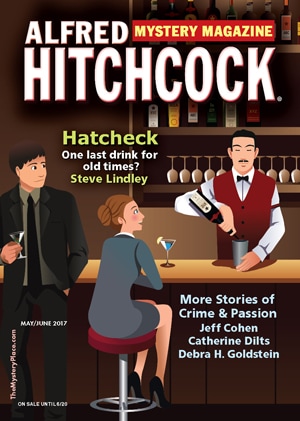|
5/30/2017 0 Comments Graupel and Glamping graupel graupel Memorial Day Weekend, we drove to the mountains to do some camping and fishing. As often happens when we camp with our elder daughter's family, it rained. Then it snowed, or rather graupeled. Graupel is a variety of snow that is somewhere between flakes and hail. The graupel didn't last long, and the next day was beautiful. My husband's father hoped to do some fishing, but the day he was with us was the graupel day. Still, he was happy to be in the mountains. We introduced my sister to our version of glamping. Although glamping can be quite luxurious, in our world, it means you aren't sleeping on the ground. We have cots, rated sleeping bags, and even propane heaters if it comes to that. We set up a canopy for shade and shelter from the rain. Our daughter's family has an RV, so during the storm, they watched movies in heated comfort. We didn't catch any fish, but we did go on a vertical hike. We were over 10,000 feet on a beautiful mountain. More photos below in a slide show.
0 Comments
 The Tattooed Corpse by Jude Roy in Mystery Weekly Magazine takes the reader on an action-filled trip to Louisiana. A private detective is hired by a man who claims someone is trying to kill him. Howard Fontenot dies that night, and PI LeGrand doggedly sets out to discover what really happened. This story was heavy on dialogue, which worked. Short, choppy interchanges between characters got to the point quickly. There are interesting twists in the tale to keep the reader guessing.  The pages of Alfred Hitchcock Mystery Magazine are regularly filled with interesting stories, but I've noticed recent issues have entertained with a touch of daring. The March/April 2017 issue featured Dale Berry's graphic short, Dead Air. In the current issue, May/June 2017, two stories struck me as a touch out of the ordinary. Home From Home, by SJI Holliday, is told in present tense. If you don't remember your terminology, most stories are told in past tense. "He drove." Present tense would say, "he drives," or "he is driving." You realize with the first line that Holliday is using present tense: "He's enjoying the walk." Sergeant Davie Gray is on holiday in Brighton. Before he gets a chance to relax, a body on the beach draws him inexorably into a mystery. Telling a story using present tense gives the action immediacy. You the reader are experiencing events in real time with the protagonist. In less capably hands, this could be awkward or annoying. Holliday pulls it off, and even gives us a twist ending. Another unusual tale is Twelve Angry Days by Paul D. Marks. Emony Taylor is delighted at her good fortune in being selected as a juror for a trial. As the story unfolds, it becomes obvious she has an agenda, but you are deep into the tale before you have gathered the clues to figure out her motivation. There are twelve people on the jury, which lasts twelve days. Each day is delivered diary-style. "Day 1 Emony Taylor entered the room with the rest of them. Twelve people, most of whom would rather have been anywhere else, including stuck in the perpetual traffic of the 405. But for one reason or another they couldn't get out of it." I was reminded of the epistolary novel, a literary device where a story is told through letters. Bram Stoker's Dracula used this technique. While Twelve Angry Days is not, strictly speaking, epistolary, the diary-style storytelling was used effectively. The reader realizes that time is running out for Emony to achieve her goal. 5/16/2017 0 Comments Rock Shop Inspiration I was thrilled when a friend sent me a photo of Lin Ottinger's Moab Rock Shop in Utah. She and a friend visited Utah a couple weeks ago. When she saw the rock shop, she thought of my novel series. This summer, the first two books in my Rock Shop Mystery series will be re-released in paperback. All three are available as e-books. This is the rock shop that inspired my series. When you read the novels, you will notice ore carts filled with geodes in front of Morgan Iverson's shop, just like you see in this photo. My sign is a faded green dinosaur, and the setting is Colorado, not Utah. But the happy clutter is the same. Consider going on an adventure to a rock shop this summer. You might come away with a greater appreciation for rocks, minerals, and fossils.  The Kubelsky Block, by John C. Boland, is set in a tired resort hotel in the Catskills. There is nothing tired about the story, with richly drawn characters, humor, and a mystery with a surprise ending. "Tamar accompanied her uncle out into the hall, which was carpeted in an oatmeal color only a couple shades lighter than the walls, which were dimly lit by dozens of tiny spots focused on framed photographs of the resort's famous guests and performers." No one of the caliber of Jack Benny, Buddy Hackett, or Henny Youngman has graced the stage in many years. Still, Tamar enjoys revisiting the location of childhood vacations. Other family members are due to arrive to celebrate Uncle Yus's 85th birthday. In the wee hours, a fire alarm goes off, setting into motion a mystery that needs to be solved. I enjoyed learning bits of history about the Catskills resort, and getting to know Tamar Gillespie, whose policeman husband passed away a year ago. The Kubelsky Block is an entertaining read, making its appearance in the May/June issue of Alfred Hitchcock Mystery Magazine.  Pikes Peak May 2017 Pikes Peak May 2017 Fiction according to Donald Maass, New York agent and author of writing how-to books that push writers to new levels: "Your protagonist is your vengeance. Let him loose." I attended the Pikes Peak Writers Conference Thursday Prequel with Donald Maass on April 27. The program began as an add-on to the regular Friday through Sunday conference schedule. The Thursday Prequel has become such a success that it is now offered every year. Many of us who can’t attend the entire conference opt for this one full day. One day with Donald Maass provides nearly an entire writing conference worth of inspiration and education. He opened by stating that our goal as writers should be to take the reader on an emotional journey. How do you do this? Not, as you might think, by getting the reader to feel what the characters feel. I had attended a Maass workshop at the 2012 PPWC. Later that year I would sell my first short story and my first novel. Were the two events directly related? Hard to say, although the workshop certainly pushed my writing up a notch. In many ways, back then I was like a high school kid sitting in on a graduate school class. I was definitely learning, but a lot of the workshop was over my head. Five years ago I did not know what I did not know. Now that I’ve been multi-published in short and long fiction, I was curious whether there was anything else I could possibly learn about writing. Silly me. This year’s Maass workshop was based on his book The Emotional Craft of Fiction: How to Write the Story Beneath the Surface. I had not read the book, but will have to obtain a copy now. What this is not: An author creates a character who has an emotional experience. Let’s say – FEAR of walking into the creepy old house. In the course of reading the story, a reader experiences the fear exhibited by the character. Wrong. What this is: Deeply thoughtful writing that creates emotional connection with the reader. "Finding the meaning in moments is what makes an emotional experience for readers." The reader must actually process the events, instead of passively observing them. How I interpret this: Just because the character entering the creepy house experiences fear doesn’t mean the reader will. The reader might think the character is Too Stupid To Live, and fail to connect with the character or the story. Writers have to dig deeper to cause an emotional reaction in the reader, beyond the obvious surface of the story. If you don't care about the characters, or have hope he or she can overcome the odds, you won't have an emotional reaction to the story. Maass described cognitive evaluation - when we are surprised, we have to stop to process the situation. Generating this surprise comes from not going for the surface, the cliche, the obvious. The processing happens in our working memory. If readers pause to "chew on something," they come to their own conclusions. This emotion is his or her own. Instead of writing in camera shots, Maass suggested writers try a me-centered narration, which he called close third person. Think of the novels or stories that have stuck with you. That keep popping up in your thoughts at odd moments. Works that have changed you in some way. These aren’t necessarily classics – well-written genre fiction can have the same impact. These are the stories that connected with you emotionally, and perhaps even elevated the way you perceived your own experiences. During the workshop, I jotted a dozen pages of notes for my work-in-progress. I was inspired to think in new ways about my characters, and imagined scenes that add layers to the story. I’m excited to start working on this project. Five years after my first published novel and short story, I still have a lot to learn.  I received my copy of the Alfred Hitchcock Mystery Magazine, May/June 2017 issue, on May 2. My mail delivery apparently comes via Pony Express, as everyone else who subscribes seemed to have received theirs already. Needless to say, I was anxious to dive in. First, I read the Mystery Classic, a feature in every issue showcasing an historical mystery short story. Jason Half runs the Gladys Mitchell tribute website. Half wrote the story introduction, giving Mitchell’s literary biography. She was a contemporary of well-known mystery authors Agatha Christie and Dorothy L. Sayers, and a prolific writer, yet she did not achieve the same level of fame. Mitchell is on my TBR (to be read) list, along with dozens of other books. I was happy to be introduced to the author with her short story Daisy Bell. The setting is the contemporary (1940) English countryside. Although descriptions are spare, Mrs. Bradley observes the “moorland scenery” from the back seat of her car. After a chance encounter with a young woman on a bicycle, Mrs. Bradley notices something out of place on the side of the road, and tells her chauffeur to stop. Mitchell’s sleuth seems to constantly gather potential clues, putting everything together for a tidy solution at the end. The next story I read was The Night They Burned Ms. Dixie’s Place, by Debra H. Goldstein. Set in the Civil Rights era in Birmingham, Alabama, the nameless narrator is a young boy whose innocence adds a layer to the mystery. The reader quickly realizes what is going on, while he simply observes. Clues are given discretely, culminating in a solution that the boy only seems to fully understand later in life. At first glance, these two stories could not be more different. The historical settings are decades apart. Mrs. Bradley, an older woman with enough resources to have a chauffeur, is the third person point of view character in Daisy Bell. A young boy, whose mother has to do housekeeping in a house of ill repute to make ends meet, narrates The Night They Burned Ms. Dixie’s Place in first person point of view. Despite grand differences of character, setting, and POV, the stories struck me as sharing a specific mystery story style. That may indicate this mystery format transcends time and space, but on a less philosophical level, both authors created puzzle stories. Yes, setting and character are important, but the goal of the story is to solve a mystery with clues presented within the tale. Then aren’t all mystery stories puzzles? Not really. A few mystery stories are open-ended, leaving the reader to ponder different potential solutions. In some, the mystery may seem secondary to telling a larger tale. Nothing wrong with either – just a difference in style. In my definition, the puzzle story does not delve deeply into issues peripheral to solving the mystery. Character development, setting description, theme, and other elements of literature may be present, but in light touches. If you analyze the puzzle story, you will clearly see clue 1, clue 2, clue 3, suspects, and bam! - the solution. I won’t divulge those clues in Daisy Bell and The Night They Burned Ms. Dixie’s Place. You’ll want to discover them for yourself. Then see if you can find the solution to the mystery before the protagonist. Happy sleuthing! Feel free to leave a comment if you have a different take on my definition of the puzzle story. 5/2/2017 0 Comments Learning to Love the Day Job how I feel after a day at work how I feel after a day at work Today I appear on the Creatures 'n Crooks blog to talk about the day job. Most writers can't make a living off their fiction writing. We dream of a day when we no longer suffer the interference of working, and can devote ourselves full time to creating stories. For those of us who need the day (or night) job to keep a roof over our heads, I have suggestions on learning to appreciate your job. If you missed it, I appeared on Write Like a Pro! yesterday with an article on writing short fiction.  a long snowy road in the Garden of the Gods a long snowy road in the Garden of the Gods Today I appear on the Write Like a Pro blog to talk about short stories. Drop by and leave a comment! One tidbit thrown into the avalanche of advice given to new writers is, “Write and publish a short story to draw attention to your long fiction.” As though short fiction is a stepping stone to the ultimate goal, the novel. |
Subscribe to this blog: |
Proudly powered by Weebly
 RSS Feed
RSS Feed